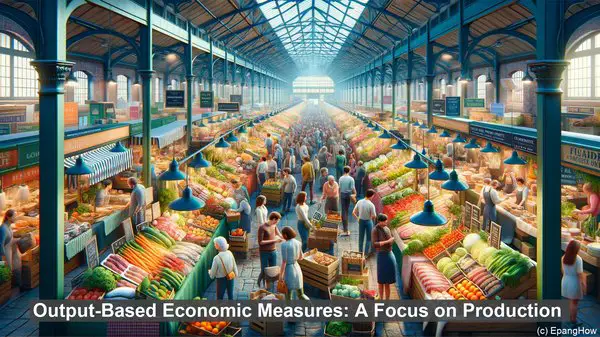Introduction: Assessing Economic Progress
Hello, everyone! When it comes to evaluating a country’s economic growth and development, there are multiple approaches. Two prominent ones are output-based economic measures and welfare-based measures. While both offer insights into a nation’s well-being, they differ in their focus and the aspects they consider. Let’s dive deeper into this distinction.
Output-Based Economic Measures: A Focus on Production
Output-based economic measures, as the name suggests, primarily revolve around quantifying a nation’s production and economic activity. The most commonly used metric in this realm is Gross Domestic Product or GDP. GDP encompasses the total value of goods and services produced within a country’s borders over a specific period. It serves as a yardstick for economic growth, with higher GDP often indicating a more robust economy. Other output-based measures include industrial production indices, employment rates, and trade balances.

The Strengths and Limitations of Output-Based Measures
Output-based measures offer several advantages. They provide a snapshot of a country’s economic performance, allowing policymakers and analysts to gauge trends and make informed decisions. These measures are also relatively easy to calculate, as they rely on readily available data. However, output-based measures have their limitations. For instance, GDP doesn’t account for factors like income distribution, environmental impact, or the quality of goods and services. It also fails to capture non-market activities, such as unpaid work or volunteer efforts, which can be crucial for societal well-being.
Welfare-Based Measures: A Broader Perspective
In contrast to output-based measures, welfare-based measures take a more comprehensive approach to assessing a nation’s progress. These measures aim to capture not just economic aspects but also the overall well-being of the population. One widely recognized welfare-based measure is the Human Development Index or HDI. HDI factors in indicators like life expectancy, education levels, and income, providing a more holistic view of a country’s development. Other welfare-based measures include the Genuine Progress Indicator and the Better Life Index.
The Advantages and Challenges of Welfare-Based Measures
Welfare-based measures offer a more nuanced understanding of a nation’s state. By considering factors beyond economic output, they shed light on aspects like health, education, and social equity. This information can be invaluable for policymakers, helping them prioritize areas that need attention. However, welfare-based measures also pose challenges. They often rely on subjective data, making comparisons between countries complex. Additionally, determining the weightage of different indicators in these measures can be a contentious task, as societal priorities may vary.

The Need for a Balanced Approach
While output-based and welfare-based measures have their distinct roles, a balanced approach is crucial. Economic progress, as captured by output-based measures, is undoubtedly vital. However, it’s equally essential to ensure that this progress translates into improved welfare for the population. By considering both types of measures, policymakers can strive for inclusive growth, where economic development goes hand in hand with societal well-being.
